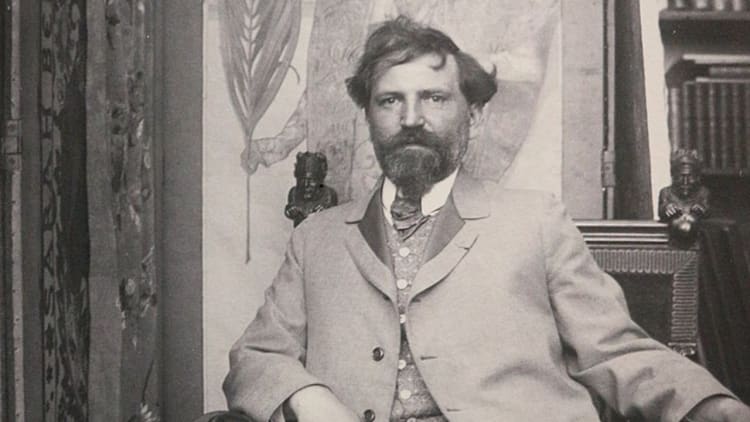Cubism constitutes a true revolution in painting and sculpture at the beginning of the 20th century. It is characterized by the abandonment of classical perspective in favor of an explosion of forms. Cubist artists represented objects that were broken down and reassembled, forming a composition with multiple viewpoints.
Let's discover together 6 elements to better know and understand cubism.

1 - Cubism takes its source in the art of Paul Cézanne
In his painting, Paul Cézanne seeks to create a pictorial space that is not only based on the imitation of reality.
In a letter dated April 15, 1904, Paul Cézanne explains his conception of painting to Émile Bernard, this letter lays the foundations of cubist theories in a way: "Treat nature by the cylinder, the sphere, the cone, all put in perspective; that is, that each side of an object, of a plane, is directed towards a central point."

Montagne Sainte-Victoire, Paul Cézanne, 1897
In 1907, a major exhibition was dedicated to Paul Cézanne just after his death in October 1906. Pablo Picasso went to this exhibition, and it was then that Cézanne's influence was felt by the first Cubists, including Picasso, Braque and Metzger. Before 1910, we even talk about the "cézannienne" period of cubism.
2 - The origin of the word "cubism"
According to the art dealer Wilhem Uhde, the term "cubism" was invented in 1907 by the poet and novelist Max Jacob. This word would have come to him under the influence of hashish during a meeting with Fernande Olivier, Guillaume Apollinaire, Pablo Picasso, Maurice Princet and Marie Laurencin.
In 1908, Henri Matisse called Georges Braque's painting Houses in Estaque (1907-1908) "cubist". His idea was quickly relayed by the art critic Louis Vauxcelles who saw "small cubes".
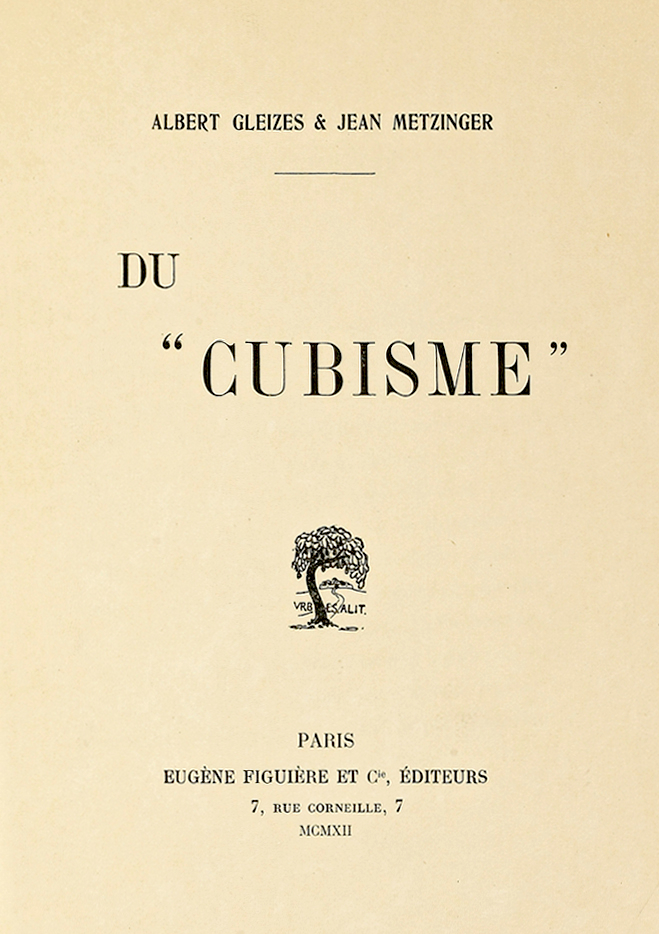
Cover of the book Du Cubisme by Jean Metzinger and Albert Gleizes, 1912
Some writings allowed a diffusion and generalization of the term "Cubism": Albert Gleizes and Jean Metzinger published in 1912 a manifesto for the movement entitled Du Cubisme.
In 1913, Guillaume Apollinaire presented Les Peintres cubistes. Méditations esthétiques, a collection of comments and reflections on this artistic movement whose emergence he followed alongside Pablo Picasso and Georges Braque, among others.
"Cubism is the art of painting new ensembles with elements borrowed not from the reality of vision, but from the reality of conception." Guillaume Apollinaire
3 - Cubists were influenced by African art
The early Cubists fed their imagination and inspiration with traditional African art.
The method of construction of African statuettes appealed to them because it was based on simple forms. The power and magic that came from these sculptures despite their simple compositions fascinated the Cubists.
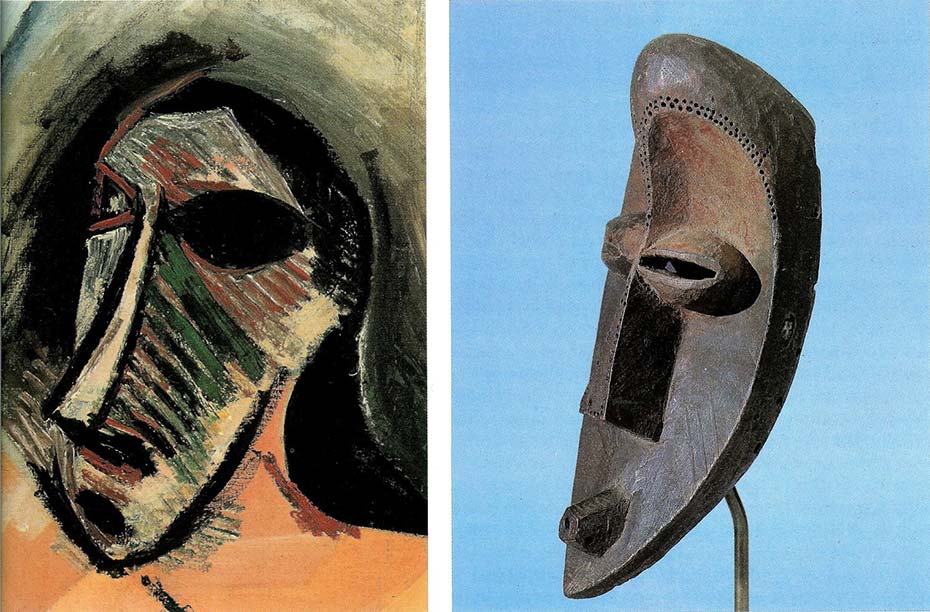
Detail of a painting by Picasso - Congolese sculpture
Max Jacob evoked the importance of an African statuette for Pablo Picasso:
"No mathematician has served cubism and Apollinaire was as surprised as I was at its birth. Cubism was born one morning, or rather one evening. Apollinaire, Picasso and I were having dinner at Matisse's house, who showed a negro statuette. Picasso looked at it for a long time and the next day when I arrived at 13 rue Ravignan, I found large sheets of paper on the floor, line studies of the Negro cannon. From that day on, Picasso sank into meditation and silence..."
4 - Picasso and Braque are considered the founders of the movement
Cubism is an artistic movement born around 1907 at the initiative of young painters: Pablo Picasso and Georges Braque. It is from this year that the two artists continue their discoveries and tend towards abstraction by working on geometry and forms.
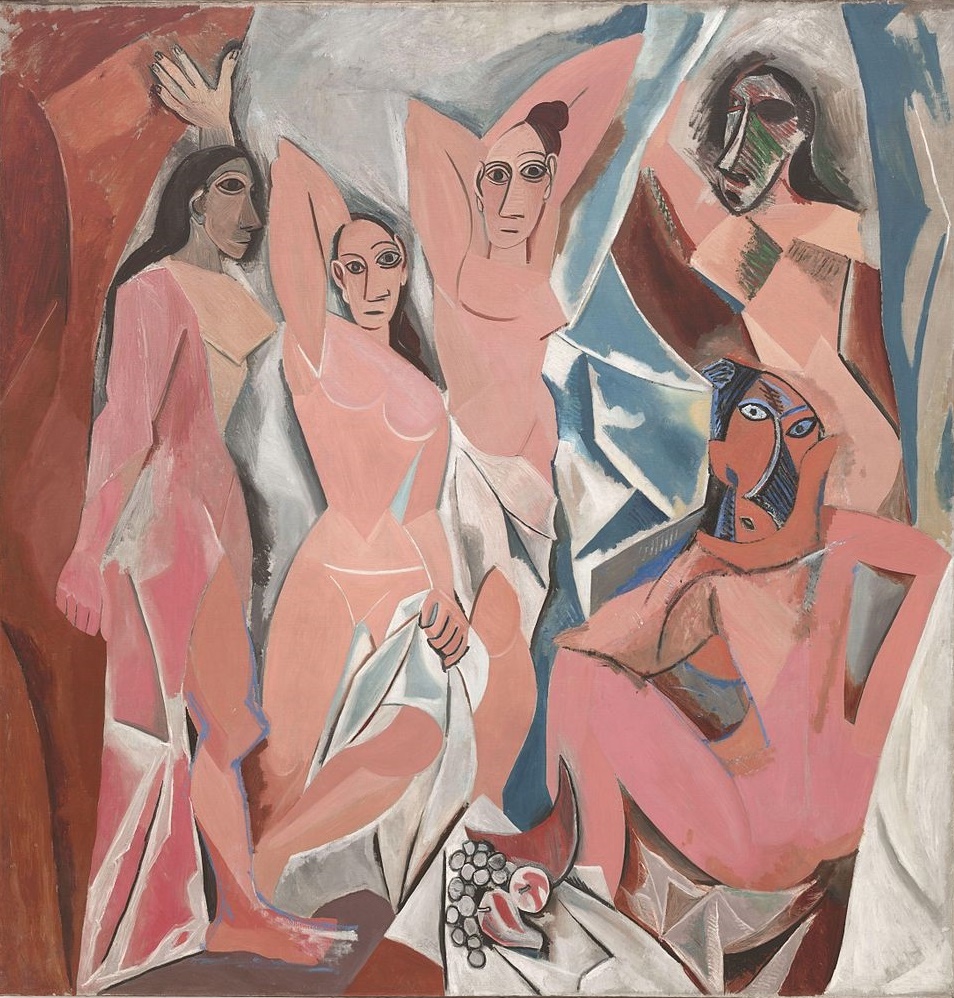
Les Demoiselles d'Avignon, Pablo Picasso, 1907
In 1907, Picasso painted Les Demoiselles d'Avignon, a painting that is considered by some art historians to be the very first Cubist work.
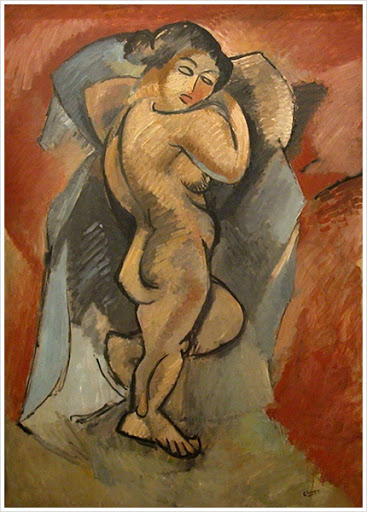
Large Nude, Georges Braque, 1908
A collaborator and friend of Picasso, Georges Braque was impressed by his painting and responded with his Large Nude, a painting he completed in the spring of 1908.
5 - Cubism had three periods
Cubism really began to structure itself around 1910 and can be divided into three main periods.
A - Analytical Cubism (1910-1912)
During these two years Picasso and Braque formed a pair, they collaborated and they omitted to sign certain paintings painted with four hands.
Their palette is not very saturated with grays, browns, greens and blues. The light occupies an important place and Braque develops the technique of paper collage. In 1911, the cubists were present at the Salon des indépendants.
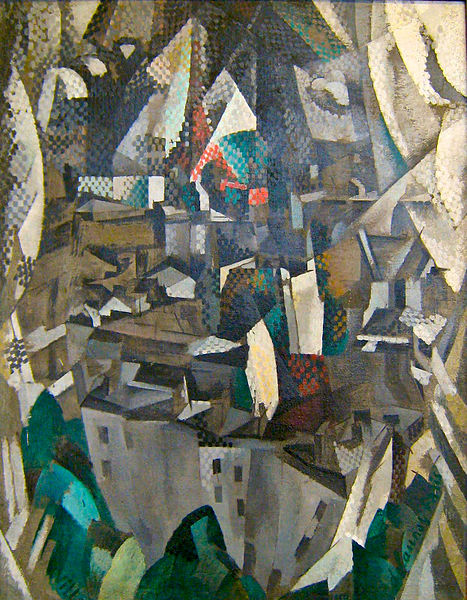
La ville n°2, Robert Delaunay, 1910
B - Synthetic Cubism (1912-1914)
Color is back and the compositions are made up of several materials and are therefore not just oil on canvas or still lifes. In 1914, Braque left for the war, which put an end to his collaboration with Picasso.
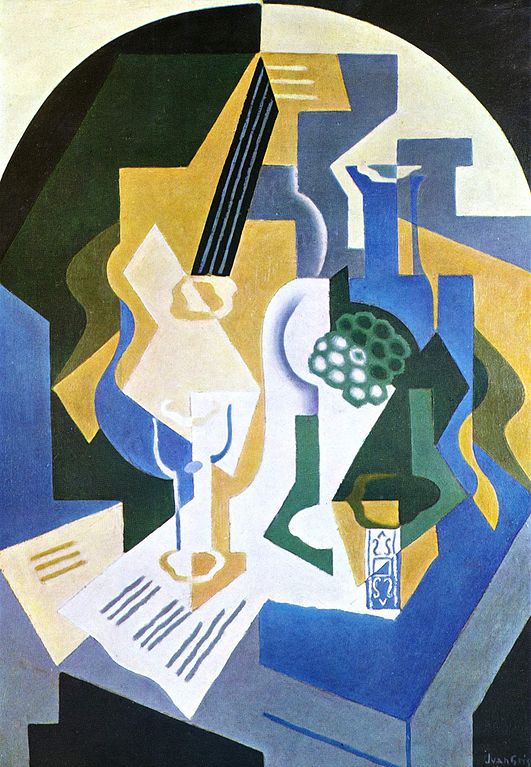
Still life with fruit tray and mandolin, Juan Gris, 1919
C - Orphic Cubism (1914-1921)
Named by Apollinaire, we can owe this cubism to Sonia Delaunay and Robert Delaunay. The color is detached from the forms and allows the creation of concentric circles. This painting brings an idea of speed and rhythm.
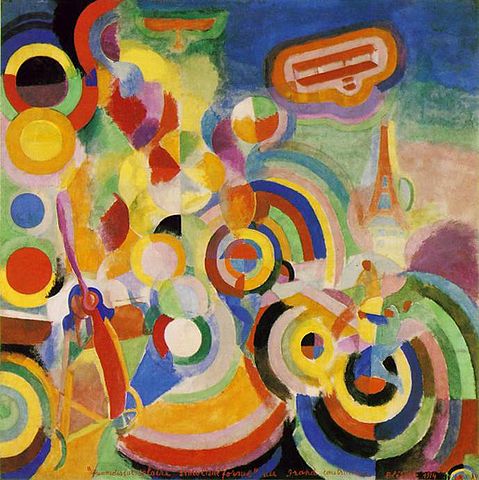
Tribute to Blériot, Robert Delaunay, 1914
6 - The main representatives of cubism

Cubists at the 1912 Salon d'Automne at the Grand Palais in Paris
Below is a non-exhaustive list of artists who can be linked to Cubism:
Pablo Picasso, Georges Braque, Juan Gris, Guillaume Apollinaire, Maria Blanchard, Constantin Brancusi, Robert Delaunay, Sonia Delaunay, Joseph Csaky, Alexander Archipenko, Alice Bailly, Albert Gleizes, Alice Halicka, Rena Hassenberg, Tour-Donas, Marcel Duchamp, Roger de La Fresnaye, Henri le Fauconnier, Raymond Duchamp-Villon, Nathalie Gontcharova Auguste Herbin, Alice Halicka, Irène Lagut, Marie Laurencin, Henri Laurens, Fernand Léger, Tamara de Lempicka, Jacques Villon, Marevna, André Lhote, Sonia Lewitska, Marie Vassileff, Alfred Reth, Jacques Lipchitz, Piet Mondrian, Jean Metzinger, Hélène Oettingen, Chana Orloff, Jeanne Rij-Rousseau, Lioubov Popova, Louis Marcoussis.



